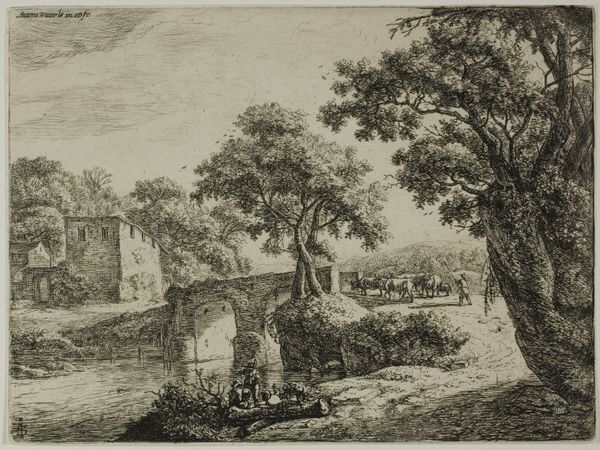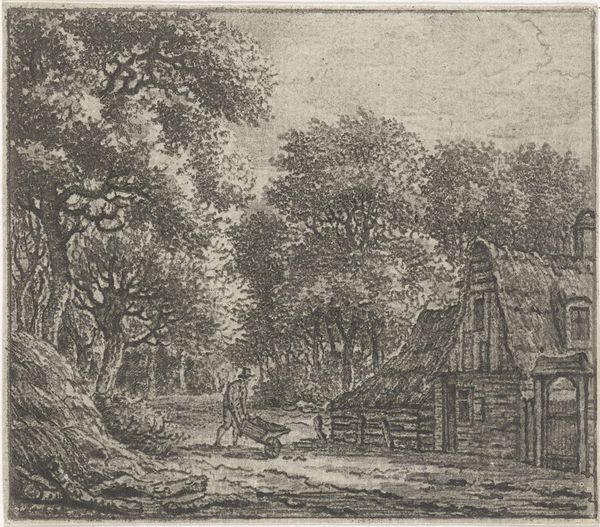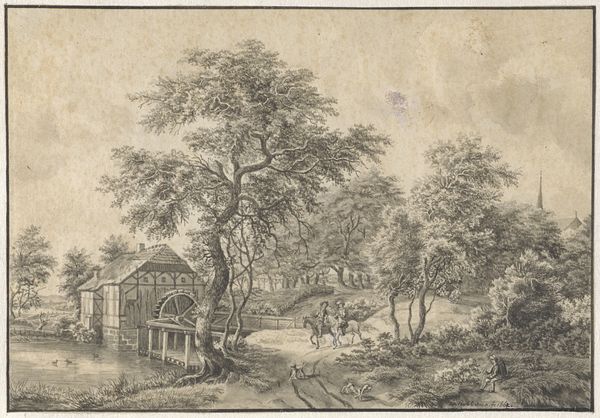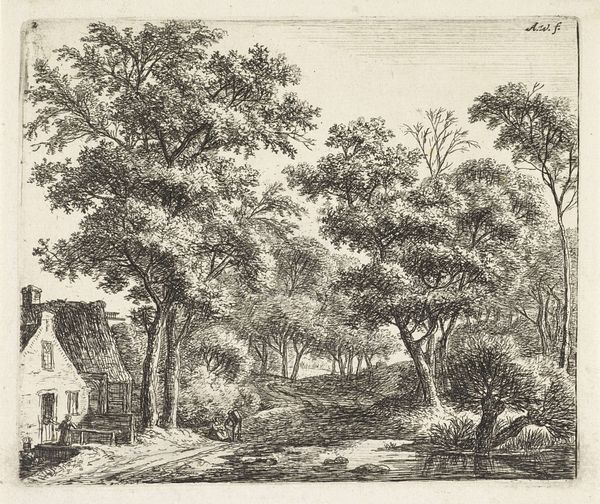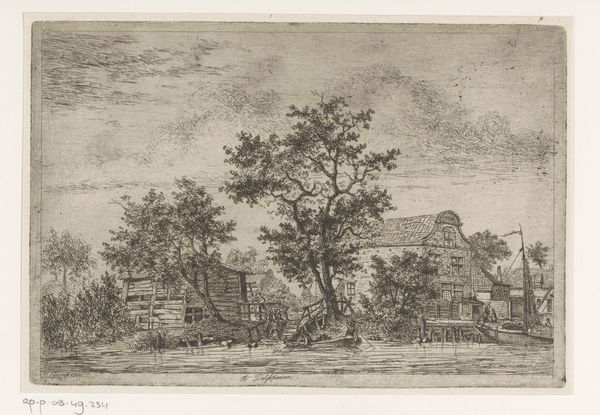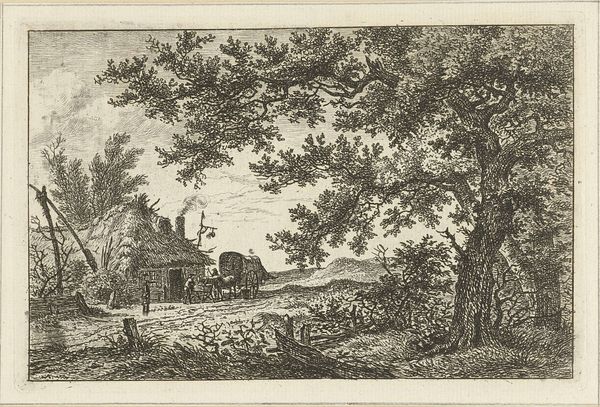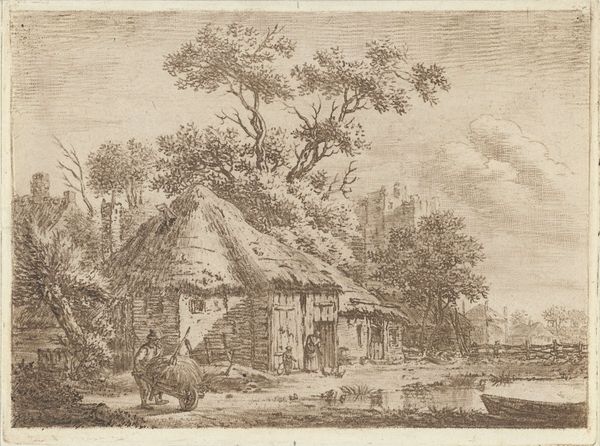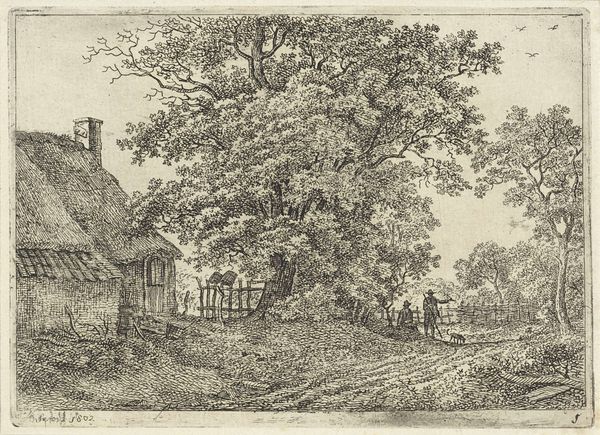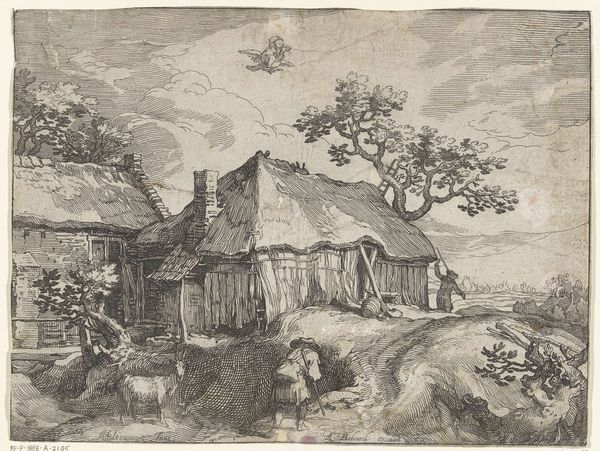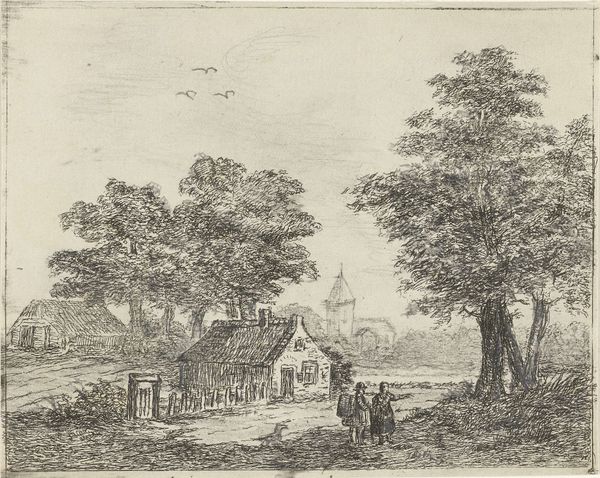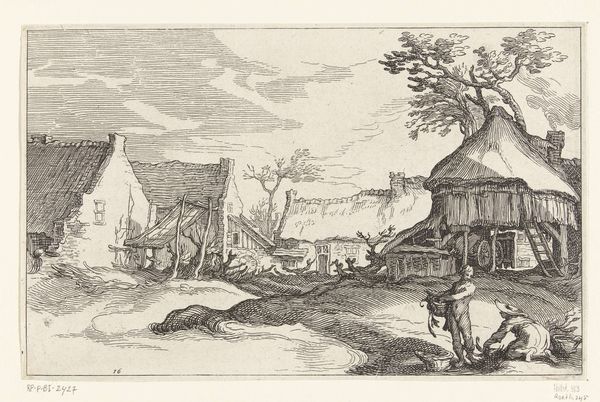
drawing, print, etching, paper
#
drawing
#
baroque
# print
#
etching
#
landscape
#
paper
#
northern-renaissance
Dimensions: 153 × 206 mm (image); 155 × 207 mm (sheet)
Copyright: Public Domain
Curator: This is Anthonie Waterloo's etching, "The Great Gate." The print, of undetermined date, invites us to consider a landscape caught between civilization and the pastoral. Editor: The density of the etching! The stark blacks and grays create an immersive scene. There’s a dreamlike quality; something about the way the light falls and the textures mingle… it's compelling. Curator: Waterloo was a master of the etching technique. By using various line weights and densities, he creates a detailed and tonal image, working with what was readily available at the time, relatively inexpensive to reproduce, thus allowing for widespread dissemination of imagery. This contrasts markedly with unique, higher value artworks, say oil paintings destined for wealthy patrons' collections. Editor: It's more than just technique. Look at the composition, though. The titular gate is positioned almost centrally, but the path draws the eye from the bottom left, creating a visual journey into the unknown beyond the structure. The eye gradually moves towards an unrefined, perhaps, untouched landscape. Curator: It begs the question, what purpose does this gate serve? Is it a checkpoint? A relic of older infrastructure now obsolete, repurposed and assimilated by the burgeoning wild that is about to swallow it? The paper itself adds another layer—its relative availability, versus more precious materials. The scale of dissemination and consumption would necessarily alter how viewers interact and understand these prints, no? Editor: True. Its ubiquity challenges the idea of the artwork as a singular, precious object. Though let's not overlook the formal elements at play. The contrast between the rough, natural textures of the trees and foliage and the geometric, constructed shapes of the buildings, and the gate create a visual tension, doesn't it? And observe the framing created by the darker foliage in the foreground. The darker fore and mid-ground tones allow us to rest our eyes more fully at the buildings. Curator: Indeed. The art wasn't exclusively available to the elite. Its very materiality speaks to a democratizing movement. Editor: Whether the focus is the process or the presentation, this is an arresting landscape, a fascinating snapshot in monochrome. Curator: Absolutely; the details and scale allows access to everyone across both time and status.
Comments
No comments
Be the first to comment and join the conversation on the ultimate creative platform.
